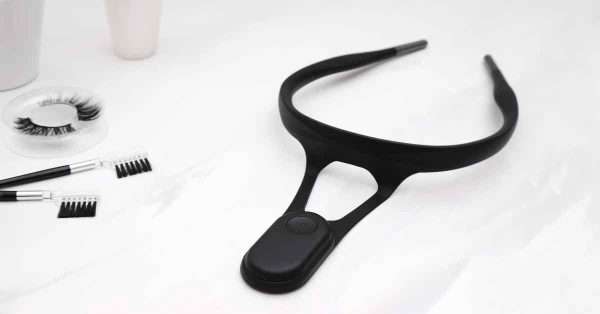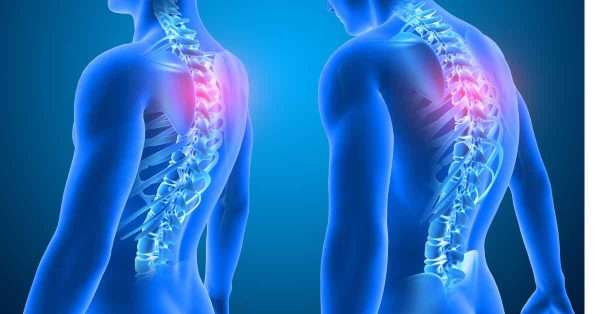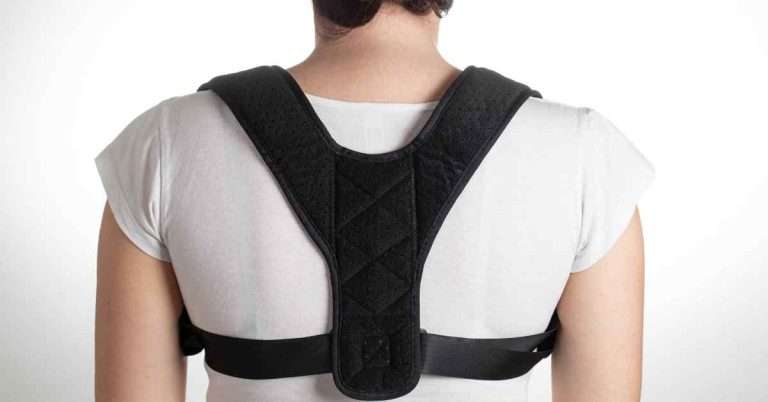Introduction
Maintaining a good posture is often overlooked in the modern era, where most of our activities are desk-bound. However, a poor posture can lead to chronic pain, especially in the lower back region. This article sheds light on the importance of using a posture corrector for pain relief, backed by high-quality references from medical journals and research studies.
The Importance of Good Posture
Good posture is not just about standing tall; it’s about aligning your body so that the stress on supporting ligaments, muscles, and tendons distributes evenly. This alignment is crucial to avoid musculoskeletal pain, particularly in the lower back. A study published in the Pakistan Journal of Medical and Health Sciences highlighted that poor posture significantly contributes to musculoskeletal disorders, which can lead to chronic pain1.
Posture Correctors: A Solution to Pain Relief

Posture correctors are devices designed to assist in maintaining the correct posture. They pull the shoulders back and align the spine to its natural position. But do they help in pain relief? The answer is yes, and there’s scientific evidence to back it up.
A study published in the Journal of Clinical and Diagnostic Research found that wearing a posture corrector for a few hours a day over several weeks significantly reduced back pain in office workers2. Another study in the Journal of Physical Therapy Science found that wearing a lumbar support belt improved posture and reduced pain in patients with lower back pain3.
Types of pain a posture corrector can help:
Posture correctors can help alleviate several types of pain associated with poor posture and musculoskeletal disorders. Here are some of them:
- Back Pain: This is the most common type of pain that a posture corrector can help with. Poor posture can lead to chronic back pain, especially in the lower back or lumbar region. A posture corrector can help align the spine naturally, reducing strain and pressure on the back muscles and ligaments.
- Neck Pain: Poor posture, especially while sitting for prolonged periods, can lead to forward head posture, where the neck protrudes. This can cause strain on the neck muscles and lead to chronic neck pain. A Posture corrector can help align the neck with the rest of the body, reducing stress and alleviating neck pain.
- Shoulder Pain: Slouching or hunching can put undue pressure on the shoulder muscles, leading to pain and discomfort. A Posture corrector pulls the shoulders back, aligning them with the rest of the body and reducing shoulder pain.
- Muscle Fatigue: Poor posture can lead to fatigue as the muscles work harder to keep the body upright. Muscle fatigue can lead to general body aches and pains. By promoting good posture, a posture corrector can reduce muscle fatigue and associated pains.
- Joint Pain: Misalignment of the spine due to poor posture can put extra pressure on various joints, leading to joint pain. By aligning the spine, a posture corrector can help alleviate this pressure and reduce joint pain.
- Headaches: Poor posture, especially forward head posture, can lead to tension headaches due to the strain on the neck and shoulder muscles. A posture corrector can help reduce this strain and potentially alleviate these headaches.
The Science Behind A Posture Corrector for Pain Relief
The pain relief posture correctors provides is not just anecdotal; scientific evidence confirms it. A study published in the journal Pain Research and Management investigated the effects of a multidimensional treatment approach, including core stabilization exercises and education on pain, function, and sitting posture in patients with lower back pain4.
The study found that both groups, those who received multidimensional treatment and those who only performed core exercises, showed significant improvements in pain and disability after training. However, the group that received the multidimensional treatment showed more significant improvements. To reduce pain, this group was educated on self-management methods, such as muscle relaxation using a hot pack, massage ball, or foam roller.
The study also found significant improvements in thoracolumbar kyphosis angle and the lumbar lordosis angle in the sitting position in the multidimensional treatment group compared to the group that only performed core exercises. The study suggests that improved posture may be an essential factor affecting the reduction or recurrence of low back pain4.
Types of posture correctors
Regular and smart posture correctors can effectively improve posture and alleviate associated pains. The choice between the two largely depends on your preferences, budget, and how interactive you want your posture-correcting experience to be.
Regular Posture Corrector
Regular posture correctors are wearable devices that physically align your body in a correct posture. They often come in braces or straps that fit around your shoulders and back. The primary function of these devices is to pull your shoulders back, which in turn aligns your spine and neck in their natural position1.
Regular posture correctors are generally more affordable, ranging from $20 to $301. They are simple to use and do not require any electronic components or batteries. However, they rely heavily on the user’s compliance and do not provide any feedback or reminders to maintain good posture.
Smart Posture Corrector

Smart posture correctors, on the other hand, are technologically advanced devices that help maintain good posture and provide real-time feedback and reminders. They often come equipped with sensors that detect when you’re slouching and send you a reminder, usually in the form of a vibration, to correct your posture2.
Smart posture correctors are typically more expensive than their counterparts due to their advanced features. They often come with a companion app that allows you to track your progress over time. Smart posture correctors can be particularly useful for those who want to monitor their posture and make conscious improvements.
Highest-rated posture correctors
- Posture Corrector for Women and Men: This adjustable upper back brace is breathable and relieves pain from the lumbar, neck, shoulder, and clavicle areas. It’s a regular posture corrector that physically aligns your body in a correct posture1.
- Mercase Posture Corrector for Men and Women: This back brace helps to correct slouching and hunching. It relieves pain in the back, shoulders, spine, and neck. It’s adjustable and comfortable, making it a suitable choice for long-term use2.
- Vicorrect Adjustable Upper Back Brace: This posture provides clavicle support and pain relief from the neck, shoulder, and upper back areas. It’s adjustable and comes in two sizes3.
- Upright GO 2: This intelligent posture corrector vibrates gently to remind you to sit or stand straight whenever you slouch. It’s small, light, and attaches directly to your back for real-time posture feedback4.
- Alignmed Posture Pullover Shirt: This is a unique posture corrector designed as a pullover shirt. It uses neuro band technology to stimulate muscle groups for improved posture4.
- Berlin & Daughter Posture Corrector: This posture corrector is for women specifically. It’s comfortable and adjustable, providing the necessary support to correct posture4.
- FlexGuard Support Back Brace Posture Corrector: This full back brace posture corrector provides robust support and is designed to alleviate back pain and correct poor posture4.
Precautions:
While posture correctors can be beneficial in promoting good posture and alleviating associated pains, it’s essential to use them correctly and be aware of certain precautions. Here are some things to consider:
- Consult a Healthcare Professional: Before using a posture corrector, it’s advisable to consult with a healthcare professional. They will provide personalized advice based on your specific needs and requirements.
- Proper Fit: Ensure that the posture corrector fits you correctly. It should be snug but not too tight that it restricts your movement or causes discomfort. Improper fit can lead to more harm than good.
- Gradual Usage: Don’t start wearing the posture corrector for long periods immediately. Begin with short durations, like 15-30 minutes, and gradually increase the time as your body gets used to it.
- Don’t Rely Solely on the Corrector: A posture corrector is a tool to aid in improving your posture, but it shouldn’t be the only solution. Regular exercise, particularly strength training and flexibility exercises, are crucial in maintaining good posture.
- Listen to Your Body: If you experience any discomfort, pain, or adverse effects while using the posture corrector, stop using it and consult a healthcare professional.
- Follow Instructions: Each posture corrector has its instructions for use. Follow these instructions carefully to get the maximum benefit and avoid potential harm.
Remember, a posture corrector is a tool to help you maintain good posture, but it’s not a cure-all solution. Combine its use with a healthy lifestyle, regular exercise, and proper ergonomics at work and home.
Conclusion

Maintaining a good posture is crucial for overall musculoskeletal health. Posture correctors can significantly help reduce pain, especially in the lower back region. However, it’s important to remember that while posture correctors can aid in pain relief, they are most effective when combined with a healthy lifestyle, regular exercise, and proper ergonomics at work and home.
Remember, it’s always best to consult a healthcare professional who can provide personalized advice based on your needs and conditions.
More Stories
Find more amazing stories on the blog!
References
- The Effect of Posture Corrector on Improvement in the Posture of Employees at a Software House
- Effect of Posture Correctors on Neck and Lower Back Pain Among Software Professionals
- The Influence of Lumbar Stabilizing Orthoses (Lumbamed Plus Pushing Application Fa Medi Bayreuth) in Lower Back Pain
- The Feasibility and Effectiveness of a New Practical Multidisciplinary Treatment for Low-Back Pain: A Randomized Controlled Trial




